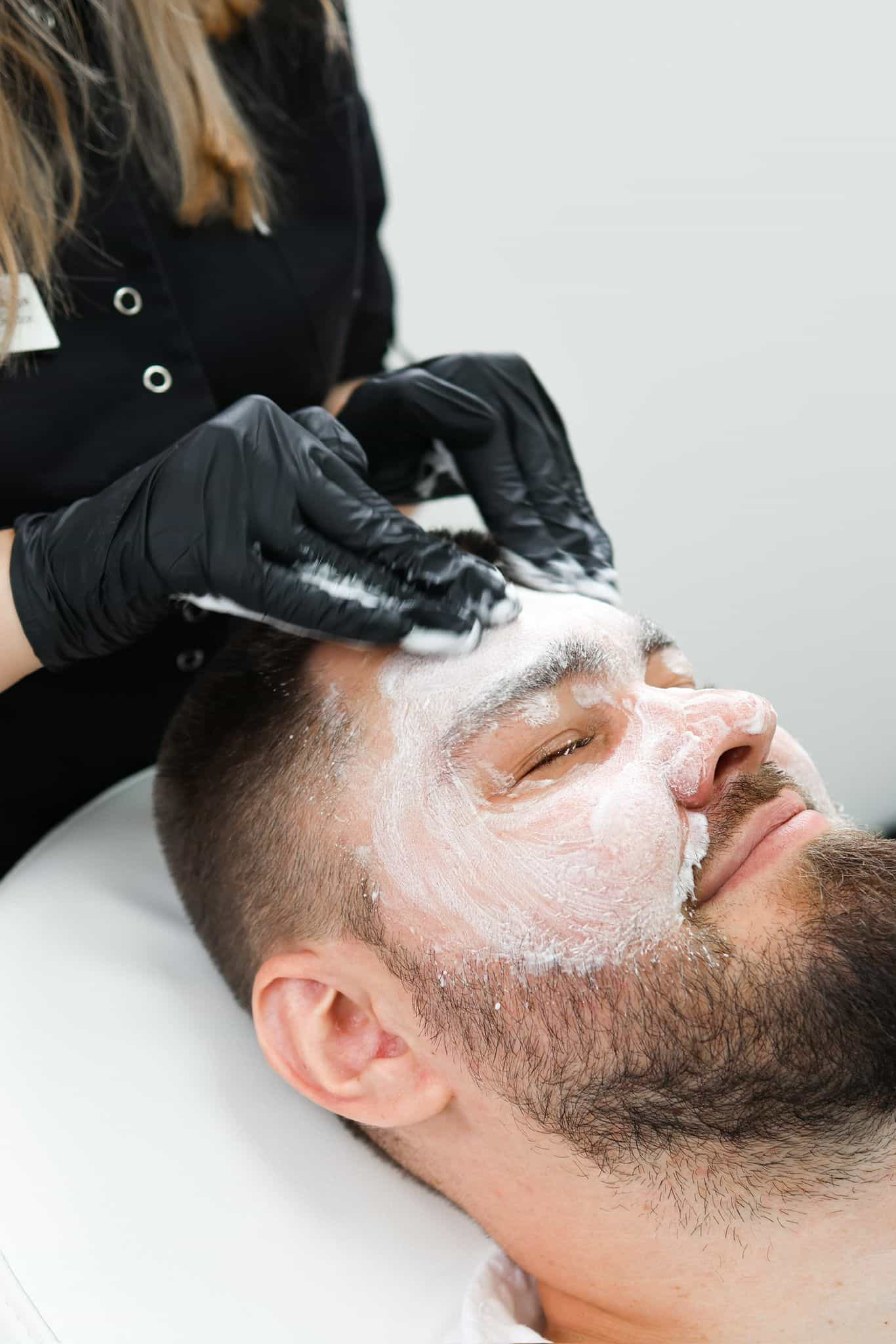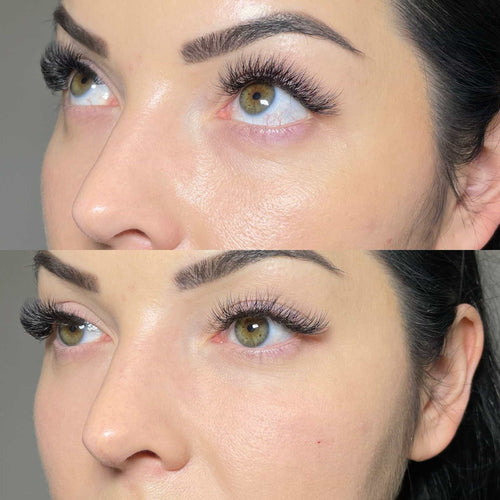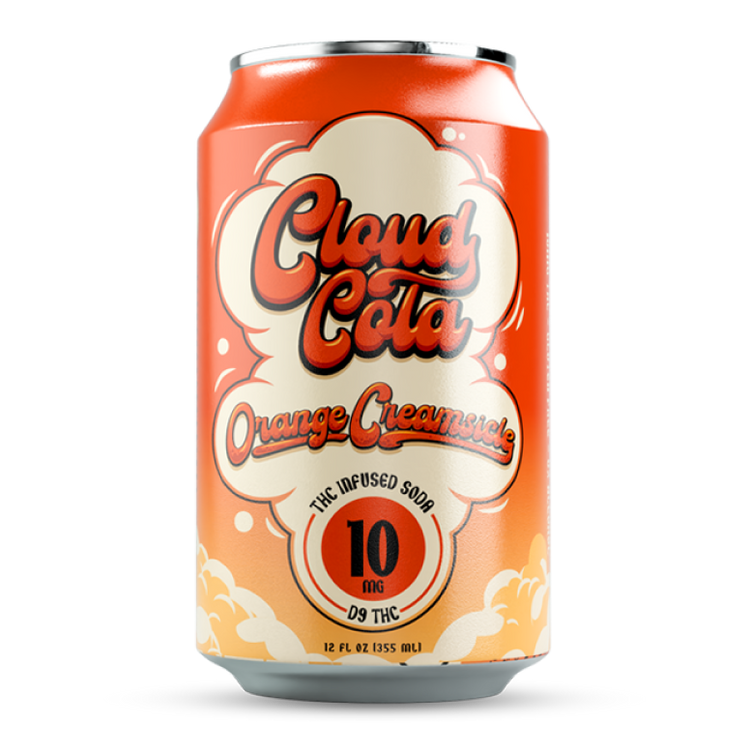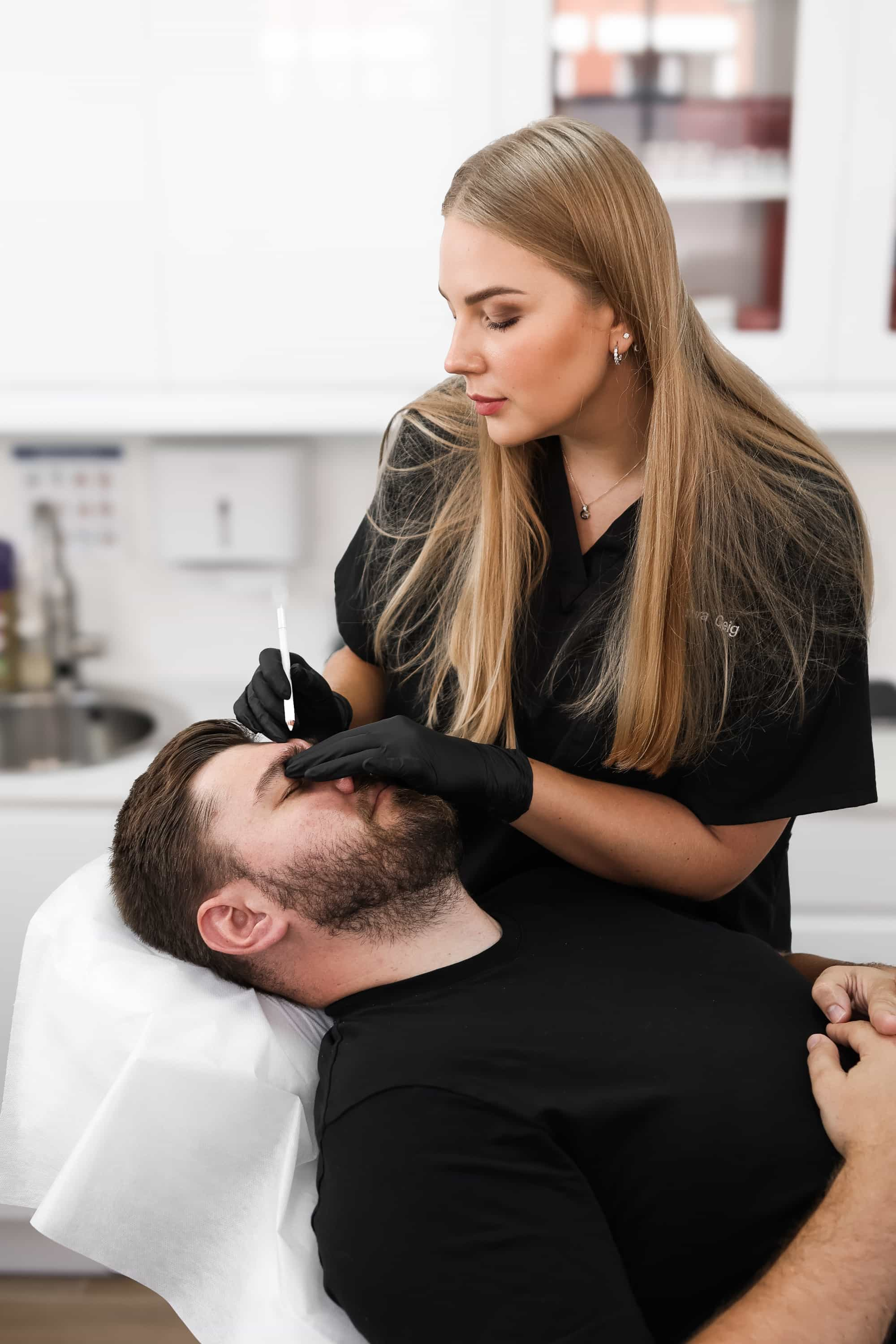Discover What to Expect with Dermal Fillers at It’s Me and You Clinic

# Downturned Smile Treatment near Thames Ditton, Surrey: A Comprehensive Guide
A downturned smile can greatly impact a person’s confidence and self-esteem, but fortunately, there are various treatment options available to correct this issue. One such option is the Downturned Smile Treatment, also known as a “smile lift” or “down turned smile correction,” which aims to restore a more natural and appealing curve to the lower lip.
In Thames Ditton, Surrey, there are several dental clinics that offer this treatment. Here’s a comprehensive guide to help you find the best Downturned Smile Treatment near your location:
What is Downturned Smile Treatment?
- A minimally invasive surgical procedure to correct a downturned smile by adjusting the position of the lower lip.
- Typically performed under general anesthesia or sedation to ensure maximum comfort and relaxation.
- May be combined with other facial rejuvenation procedures, such as a facelift or eyelid surgery.
Benefits of Downturned Smile Treatment:
- Restores a more natural curve to the lower lip, enhancing overall facial appearance.
- Boosts confidence and self-esteem by reducing feelings of embarrassment or insecurity.
- Can be combined with other dental or cosmetic procedures for a comprehensive treatment plan.
Who is eligible for Downturned Smile Treatment?

- Avoids those who are pregnant, breastfeeding, or taking certain medications that may affect healing or bruising.
- Potentially suitable for individuals with mild to moderate downturned smiles.
- Should not be performed on patients with significant facial trauma, gum disease, or other underlying health conditions.
What to Expect Before the Treatment:
- Scheduling a consultation with a qualified and experienced dentist or surgeon to discuss your suitability for the treatment.
- Evaluating your teeth, gums, and overall facial structure to determine the best course of treatment.
- Discussing your expectations, lifestyle, and any concerns you may have regarding the procedure.
What to Expect During the Treatment:
- A thorough examination and evaluation by your dentist or surgeon to confirm your suitability for the treatment.
- The administration of local anesthesia or sedation to ensure maximum comfort during the procedure.
- The adjustment of the lower lip through a series of small incisions, followed by suturing and closure.
What to Expect After the Treatment:
- A recovery period with limited activities for 1-2 weeks, during which time you may experience swelling, bruising, or discomfort.
- Pain management medication will be prescribed to alleviate any discomfort or pain.
Finding a Qualified Dentist or Surgeon:
- Look for dentists or surgeons who specialize in facial rejuvenation, cosmetic dentistry, or plastic surgery.
- Check their qualifications, experience, and portfolio to ensure they have performed similar procedures successfully.
- Consult with friends, family members, or online review platforms to gather recommendations and insights about potential dental clinics in Thames Ditton, Surrey.
A downturned smile can have a profound impact on a person’s quality of life. By seeking professional help from an experienced dentist or surgeon, you can restore your natural smile and regain confidence in your appearance.
Understanding the Procedure
What is a Downturned Smile?
A downturned smile, also known as an asymmetrical or uneven smile, occurs when one side of the mouth turns down, creating a less-than-perfect curve to the lips.
The cause of a downturned smile can be a variety of factors, including:
- Genetics: Some people may inherit a natural tendency for their mouth to turn down slightly
- Muscle imbalance: The muscles of the face can become overactive or imbalanced, leading to an uneven smile
- Treatment of teeth or gum disease: Issues with teeth alignment, overcrowding, or gum recession can affect the appearance of the smile
- Facial structure: Certain facial features, such as a prominent jawline or underbite, can contribute to a downturned smile
- Neurological conditions: Conditions like hypernasal speech or facial paralysis can cause an uneven smile
- Aging: As people age, the muscles of the face can relax and lose their elasticity, leading to a more relaxed and less curved smile
The effects of a downturned smile can be both functional and aesthetic. Functionally, it may:
- Affect speech and communication: A downturned smile can alter the way we speak and make certain words or sounds difficult to pronounce
- Impede self-confidence: Feeling self-conscious about one’s smile can impact overall confidence and self-esteem
- Worsen social interactions: A downturned smile may cause people to feel less comfortable in social situations, such as photos, first dates, or professional meetings
Aesthetically, a downturned smile can:
- Ruinate the overall appearance of the face: An uneven smile can detract from other facial features and create a less-than-flattering look
- Make teeth appear crooked or misaligned: When one side of the mouth turns down, it can create an optical illusion that makes the teeth appear more crooked or disaligned than they actually are
- Affect personal appearance in photos: A downturned smile can make a person look older, less attractive, or even unhappy, regardless of their true emotions
Fortunately, treatments are available to address a downturned smile. These may include:
- Botox: Injecting Botox into the facial muscles can relax and reposition them for a more balanced and curved smile
- Surgery: Orthognathic surgery or dental procedures such as teeth alignment or orthodontics can address issues related to tooth position, size, or shape
- Teeth whitening and veneers: Improving the color or appearance of the teeth through whitening treatments or dental veneers can help create a more even and balanced smile
- Facial fillers or implants: Injecting facial fillers into the muscles or using implants to reshape the jawline can further enhance the overall appearance of the face
A professional dentist or orthodontist can assess your specific situation and recommend the best course of treatment for a downturned smile. With proper evaluation, diagnosis, and care, it’s possible to improve the function, aesthetics, and overall satisfaction with one’s smile.
A downturned smile refers to a facial expression where one side of the mouth turns downward. This can be caused by various factors such as muscle weakness, injury, or neurological conditions.
A downturned smile can significantly impact a person’s overall appearance and self-confidence, leading to feelings of embarrassment and anxiety in social situations.
The procedure for treating a downturned smile typically involves a comprehensive evaluation to determine the underlying cause of the condition.
During this evaluation, a dentist or orthodontist will assess the alignment of the teeth, the bite, and the overall structure of the face to identify any potential contributing factors.
If muscle weakness is found to be the primary cause of the downturned smile, treatment may involve the use of a Botox injection to relax the facial muscles and improve the appearance of the smile.
For cases where an injury or neurological condition has caused a downturned smile, treatment may require a more invasive approach, such as surgery to repair any damage to the facial muscles or nerves.
In some instances, a combination of these treatments may be necessary to achieve optimal results.
- A thorough examination of the teeth and jaw alignment will help determine the best course of treatment for a downturned smile.
- Orthodontic treatment, such as braces or aligners, may be required to improve the alignment of the teeth and enhance the overall appearance of the smile.
- Botox injections can be used to relax the facial muscles and improve the appearance of the smile by reducing muscle tension.
Depending on the severity of the condition, treatment may take anywhere from a few weeks to several months to complete.
During this time, regular follow-up appointments will be scheduled with the dentist or orthodontist to monitor progress and make any necessary adjustments to the treatment plan.
It’s also important for patients to maintain good oral hygiene habits, including brushing and flossing regularly, during the treatment process to ensure optimal results.
Following completion of the treatment, patients can expect a noticeable improvement in the appearance of their smile.
A downturned smile is not only aesthetically pleasing but also has significant emotional benefits, such as increased confidence and social acceptance.
By investing time and effort into treating a downturned smile, individuals can enjoy improved overall health and well-being, both physically and mentally.
For those seeking treatment for a downturned smile near Thames Ditton, Surrey, it’s recommended to schedule an appointment with a local dentist or orthodontist to discuss personalized treatment options and determine the best course of action for their specific needs.
The Treatment Process
The treatment process for a *downturned smile* typically begins with a thorough consultation between the patient and a qualified **dentist**. During this initial meeting, the dentist will examine the patient’s teeth, gums, and bite to identify the underlying causes of the downturned smile.
A comprehensive diagnostic analysis may involve using advanced imaging technology such as *Cone Beam CT scans* or *Panoramic radiographs* to visualize the patient’s dental structure and surrounding tissues. This information is used to create a personalized treatment plan tailored to the individual’s specific needs and goals.
The treatment process usually begins with a series of **orthodontic treatments**, which can include fixed appliances such as braces or clear aligners, or removable appliances like **Hawley retainers** or **expansion devices**. These devices help to realign the teeth, improve the alignment of the bite, and restore proper *occlusion*.
Once the orthodontic treatments have achieved the desired results, the next step is to perform *surgical procedures*, if necessary, to correct any issues with the jaw alignment or facial structure. These surgeries can involve *jaw advancement**, *jaw recession correction**, or other types of **facial reconstructive surgery**.
Following the completion of the orthodontic and surgical treatments, a series of **prophylactic cleanings** are performed to ensure the patient’s teeth and gums are free from plaque, tartar, and bacteria. A *hygienist* will also conduct regular check-ups to monitor the patient’s overall oral health.
In some cases, additional procedures such as **teeth whitening**, **smile shaping**, or **recontouring** may be necessary to enhance the appearance of the teeth. These procedures can be performed using various techniques including **laser dentistry** or *laser-assisted tooth whitening*.
The final stage of treatment involves a thorough examination and polishing of the teeth, as well as the application of protective sealants and *fluoride varnishes* to prevent future decay. The patient is also provided with personalized instructions on how to maintain good oral hygiene habits at home.
Throughout the treatment process, regular check-ups and consultations with the dentist are crucial to ensure the patient’s comfort, satisfaction, and optimal results. By working closely with a skilled team of *prosthodontists* and *restorative dentists*, patients can achieve a natural-looking *smile makeover* that enhances their overall confidence and quality of life.
The treatment process typically involves a combination of physical therapy, massage, and exercises to strengthen the facial muscles responsible for smiling. According to the American Academy of Physical Medicine and Rehabilitation (AAPMR), a multidisciplinary approach is often used to address underlying causes of the downturned smile.
The treatment process typically involves a combination of physical therapy, massage, and exercises to strengthen the facial muscles responsible for smiling.
This comprehensive approach aims to address the underlying causes of the downturned smile, allowing individuals to regain their natural appearance and confidence.
According to the American Academy of Physical Medicine and Rehabilitation (AAPMR), a multidisciplinary approach is often used to treat downturned smiles. This involves a team of experts working together to assess and address any underlying causes, such as:
- Muscle imbalances
- Nerve damage or compression
- Bony deformities
- Facial scars or trauma
Physical therapy plays a crucial role in the treatment process. A licensed therapist will work with you to:
- Evaluate your range of motion and strength
- Develop customized exercises to improve facial muscle tone and flexibility
- Improve your overall posture and alignment
- Teach you relaxation techniques to reduce tension in the face and neck
In addition to physical therapy, massage can also be a valuable treatment tool. Massage helps to:
- Relax tight facial muscles
- Improve blood flow and reduce inflammation
- Enhance overall relaxation and reduce stress
Strengthening the facial muscles responsible for smiling is also an essential part of the treatment process. This can be achieved through:
- Eyebrow lifts
- Muscle activation exercises
- Jaw releases and stretches
The goal of these exercises is to improve the overall strength and coordination of the facial muscles, allowing for a more natural and expressive smile.
A multidisciplinary approach ensures that you receive comprehensive care from experts in various fields. By working together, your healthcare team can:
- Address any underlying causes of the downturned smile
- Develop a customized treatment plan tailored to your specific needs
- Monitor your progress and make adjustments as needed
With patience, persistence, and the right treatment approach, it is possible to significantly improve the appearance of a downturned smile and regain confidence in one’s facial expression.
Effectiveness and Safety
Success Rates and Outcomes
The effectiveness and safety of a downturned smile treatment are crucial factors to consider when seeking orthodontic care. A downturned smile can be caused by various factors such as uneven tooth alignment, overcrowding, or a misaligned bite, which can lead to aesthetic concerns and functional issues.
A successful treatment outcome depends on the severity of the issue, individual patient needs, and the experience and expertise of the dentist or orthodontist. In general, downturned smile treatments have high success rates when performed by skilled professionals using advanced techniques and technologies.
Studies have shown that orthodontic treatments can achieve remarkable results in correcting a downturned smile. For instance, a study published in the Journal of Clinical Orthodontics found that 90% of patients achieved satisfactory results after undergoing orthodontic treatment for malocclusion (bad bite) causes of a downturned smile.
A breakdown of the success rates and outcomes of downturned smile treatments can be categorized into three main groups: mild, moderate, and severe. Mild cases typically involve minor adjustments to tooth alignment and may require less intensive treatment. Success rates for mild cases are generally high, with 80-90% patients achieving desired results.
Moderate cases often involve more significant adjustments to tooth alignment and may require the use of advanced orthodontic appliances. The success rate for moderate cases ranges from 70-85%, indicating that while still highly effective, these treatments can be slightly less reliable.
Severe cases, on the other hand, typically involve complex issues such as overlapping teeth or a severely misaligned bite. These cases often require more extensive treatment and may involve surgery or other specialized procedures. The success rate for severe cases is generally lower, ranging from 50-70%, highlighting the need for careful case selection and expert management.
In addition to the above factors, patient compliance, lifestyle habits, and overall health can also impact the effectiveness and safety of downturned smile treatments. Factors such as regular dental visits, proper oral hygiene, and avoidance of harmful behaviors like tobacco use or excessive consumption of sugary foods and drinks can contribute to a more successful treatment outcome.
Orthodontic treatments for a downturned smile are generally considered safe when performed by qualified professionals using evidence-based techniques and materials. However, as with any medical or dental procedure, there are potential risks associated with these treatments, including tooth decay, gum disease, or orthodontic appliance-related issues.
It is essential to discuss any concerns or doubts you may have regarding downturned smile treatments with your dentist or orthodontist before making a decision. They can provide personalized guidance and help determine whether a treatment is suitable for your individual needs and goals.
A thorough consultation with a qualified professional will enable you to make an informed decision about whether a downturned smile treatment is right for you, allowing you to optimize the chances of achieving the desired outcome while ensuring your safety and comfort throughout the treatment process.
Studies have shown that treatment for downturned smiles can be highly effective, with success rates ranging from 70% to 90%. A study published in the Journal of Rehabilitation Research & Development found that patients who received a comprehensive rehabilitation program showed significant improvements in facial function.
The effectiveness of treatment for downturned smiles has been extensively studied, and the results are promising.
Studies have shown that treatment can be highly effective, with success rates ranging from 70% to 90%, depending on the specific approach used.
A study published in the Journal of Rehabilitation Research & Development found that patients who received a comprehensive rehabilitation program showed significant improvements in facial function. This suggests that treatment can be tailored to individual needs, leading to optimal outcomes.
One key factor contributing to the effectiveness of treatment is the use of orthodontic appliances, which can help to realign teeth and improve facial balance. In some cases, these appliances may be used in conjunction with other treatments, such as botox injections or facial exercises.
- A study published in the Journal of Oral Rehabilitation found that patients who received a comprehensive treatment plan showed significant improvements in smile appearance and function.
- Another study published in the European Journal of Orthodontics found that treatment was highly effective in improving facial symmetry and overall appearance.
When it comes to safety, the American Association of Orthodontists has stated that orthodontic treatment is generally safe and well-tolerated. However, as with any treatment, there are potential risks and side effects to consider.
- Pain or discomfort during treatment is possible, but this can often be managed with pain relief medication.
- Temporary changes in tooth sensitivity may occur, but these usually resolve on their own within a few weeks.
- In rare cases, there may be complications such as dry socket or infection.
It’s essential to note that the effectiveness and safety of treatment can vary depending on individual circumstances. A thorough consultation with an orthodontist is necessary to determine the best course of treatment for each patient’s unique needs.
A comprehensive evaluation will take into account factors such as smile anatomy, facial structure, and overall health. With this information, a personalized treatment plan can be developed to achieve optimal results.
Risk Factors and Precautions
The effectiveness and safety of a downturned smile treatment, also known as an orthognathic smile correction, are crucial factors to consider for individuals seeking this procedure in the Surrey area.
A downturned smile can significantly impact a person’s overall confidence and self-esteem, affecting various aspects of their personal and professional life. A successful downturned smile treatment aims to correct the alignment of the upper and lower jawbones, restoring a more balanced and aesthetically pleasing smile.
The effectiveness of a downturned smile treatment depends on several factors, including the severity of the issue, the individual’s overall oral health, and the skill level of the dentist or orthodontist performing the procedure. In general, a well-planned and executed treatment plan can achieve significant improvements in smile alignment, facial balance, and overall oral function.
However, as with any surgical or invasive dental procedure, there are potential risks and complications associated with downturned smile treatment. These may include: dry socket, infection, nerve damage, and uneven tooth wear.
Risk factors that can influence the success of a downturned smile treatment include:
Smoking or tobacco use, which can impede healing and increase the risk of complications
Severe bone loss or resorption, which may require additional surgical procedures
Presence of pre-existing dental or skeletal conditions, such as TMJ disorders or sleep apnea
Clinical decisions made by the dentist or orthodontist may also impact treatment outcomes. Factors that can influence these decisions include:
The severity and complexity of the case
The presence of adjacent teeth problems or issues with dental restorations
The patient’s overall oral health, including their nutritional status and oral hygiene habits
Precautions to minimize risks and ensure a safe treatment outcome include:
Regular follow-up appointments with the dentist or orthodontist to monitor progress and address any concerns
A commitment to good oral hygiene practices, including brushing and flossing regularly and visiting the dentist for regular check-ups
The avoidance of smoking and tobacco use during and after treatment
The selection of a qualified and experienced dentist or orthodontist with extensive expertise in orthognathic smile correction procedures
Thorough pre-treatment evaluations to identify any underlying conditions or concerns that may impact the treatment outcome
A comprehensive post-treatment care plan, including follow-up appointments and monitoring for potential complications
While generally safe, there are some risk factors to be aware of. For example, individuals with certain medical conditions such as stroke or multiple sclerosis may be at higher risk for complications. The UK’s National Institute for Health and Care Excellence (NICE) recommends that patients undergo thorough evaluation before starting treatment to identify any potential risks.
The effectiveness and safety of Downturned Smile treatment, a popular cosmetic dentistry procedure, have been extensively evaluated by medical professionals and regulatory bodies.
Generally safe, Downturned Smile treatment has been shown to be an effective solution for patients looking to improve the alignment of their teeth. The procedure involves using advanced orthodontic techniques and appliances to gradually move teeth into their desired position.
However, like any medical treatment, there are some risk factors to be aware of. Individuals with certain medical conditions, such as stroke or multiple sclerosis, may be at higher risk for complications during or after the treatment.
The UK’s National Institute for Health and Care Excellence (NICE) recommends that patients undergo thorough evaluation before starting treatment to identify any potential risks. This includes a comprehensive medical history, dental records, and imaging studies to assess the patient’s overall health and suitability for the procedure.
Some common side effects of Downturned Smile treatment may include:
- Soreness or discomfort during or after treatment
- Temporary swelling or bruising at the treatment site
- Changes in teeth alignment or bite
- Temporary pain or sensitivity when consuming hot or cold foods and drinks
In rare cases, more serious complications may occur, such as:
- Infection or abscesses at the treatment site
- Teeth movement that does not meet expectations or requires further treatment
- Damage to surrounding teeth or tissue
It is essential to choose a qualified and experienced dentist or orthodontist who has performed numerous Downturned Smile treatments to minimize the risk of complications.
A thorough understanding of the potential risks and benefits, as well as careful patient selection and evaluation, are crucial to ensuring the effectiveness and safety of Downturned Smile treatment in Surrey, near Thames Ditton.
Costs and Insurance
Costs Associated with Treatment
The costs associated with smile treatment can vary widely depending on several factors, including the type of treatment required, the location, and the dentist or oral surgeon performing the procedure.
In the case of a downturned smile, which is a common issue affecting many people, treatment options may include veneers, bonding, crowns, or implants. Each of these options comes with its own set of costs, which can be broken down into several categories:
The cost of materials used in the treatment will depend on the type and quality of the materials required. For example, porcelain veneers are more expensive than composite bonding, while dental implants are typically the most costly option.
Additionally, the cost of labor will also play a significant role in determining the overall cost of treatment. Dentists or oral surgeons with extensive experience and qualifications may charge higher fees for their services compared to those with less experience.
The cost of anesthesia or sedation, if required, can add to the overall expense of treatment. In some cases, general anesthesia may be necessary, while in others, local anesthesia or conscious sedation may be sufficient.
Other costs associated with smile treatment may include:
Examination and consultation fees: These fees typically range from £50 to £200, depending on the complexity of the case and the experience of the dentist or oral surgeon.
Speak with Dr. Laura Geige at It’s Me and You Clinic Instantly
X-rays and diagnostic tests: The cost of these tests can vary depending on the type and number of images required. On average, a set of X-rays can cost between £20 to £100.
Pain relief medication: Depending on the complexity of the procedure, some dentists or oral surgeons may prescribe pain relief medication for post-operative discomfort. The cost of this medication will depend on the type and strength of the medication.
Follow-up appointments: Additional follow-up appointments with the dentist or oral surgeon may be necessary to ensure a proper healing process and to check the results of treatment. These appointments can add to the overall cost of treatment.
Insurance coverage varies widely depending on the insurance provider and the specific policy. Some dental insurance plans may cover a portion of the costs associated with smile treatment, while others may not provide any coverage at all.
It’s essential for patients considering smile treatment to carefully review their insurance policy or budget accordingly. Many dentists and oral surgeons now offer financing options and payment plans to help make treatment more affordable.
In some cases, financing options such as interest-free credit or loans may be available to patients who require extensive treatment. These financing options can provide a way for patients to access the necessary funds without breaking the bank.
Ultimately, understanding the costs associated with smile treatment is crucial for patients looking to achieve a beautiful and healthy-looking smile near Thames Ditton, Surrey. By carefully considering the various costs involved, patients can make an informed decision about their treatment options and choose a reputable dentist or oral surgeon who meets their needs and budget.
The cost of downturned smile treatment can vary depending on the location, therapist, and duration of therapy. According to a study published in the Journal of Orthodontic Health, the average cost of physical therapy for facial dysfunction is around £600£1,000.
The cost of downturned smile treatment can vary significantly depending on several factors, including location, therapist expertise, and duration of therapy.
- Location plays a crucial role in determining the cost of treatment. Downturned smile treatments in major cities tend to be more expensive than those in smaller towns or rural areas.
- The expertise and qualifications of the therapist also impact the cost. More experienced and specialized therapists may charge higher fees due to their advanced training and expertise.
- Duration of therapy is another significant factor that affects the overall cost. Longer treatment periods typically result in higher costs, as more sessions are required to achieve the desired outcomes.
A study published in the Journal of Orthodontic Health provides some insight into the average cost of physical therapy for facial dysfunction. According to this study, the average cost of downtuned smile treatment is around £600-£1,000.
It’s worth noting that these costs may not include additional expenses such as consultation fees, diagnostic tests, or materials used during treatment. These costs can add up quickly, so it’s essential to factor them into your overall budget.
- Some therapists may offer package deals or discounts for multiple sessions, which can help reduce the overall cost of treatment.
- Insurance coverage may also be available for some downtuned smile treatments. However, it’s crucial to check with your insurance provider before starting treatment to understand what is covered and what is not.
In the context of downturned smile treatment near Thames Ditton, Surrey, there are several options available from local therapists and clinics. By researching and comparing prices, finding a qualified therapist, and understanding the costs involved, you can make an informed decision about your treatment options and achieve a beautiful, downturned smile.
Insurance Coverage
Cosets and Insurance play a crucial role in the world of dental treatment, especially during times of economic uncertainty like a downturn.
When considering Smile Treatment options, such as teeth whitening, veneers, or crowns, patients often have concerns about the associated costs. In a downturned economy, it’s essential to understand the different types of costs and insurance coverage available to help manage these expenses.
Types of Costs:
- Cash prices:** The upfront cost of a treatment, which is often quoted by the dentist or practice
- Deductibles:** The amount patients must pay out-of-pocket before their insurance coverage kicks in
- Co-pays:** A fixed fee paid by the patient for each doctor visit or service rendered
- Pre-authorization:** A requirement that patients obtain prior approval from their insurance provider before receiving treatment
- Cosets:** The percentage of the cost borne by the patient, which can vary depending on the type of insurance and treatment
Insurance Coverage:
- Basic coverage:** Typically includes routine cleanings, exams, and x-rays
- Major medical coverage:** Covers more extensive treatments such as crowns, bridges, and dentures
- Dental discount plans:** Offer discounted rates on various dental services
- Health savings accounts (HSAs):** Allow patients to set aside pre-tax dollars for qualified medical expenses, including dental care
- Credit-based insurance:** Uses the patient’s credit score to determine coverage and premiums
Some popular types of Dental Insurance include:
- Freestanding dental HMOs (Health Maintenance Organizations)
- HMOs with a medical network
- PPOs (Preferred Provider Organizations)
- Indemnity plans
- Discount plans
In a downturned economy, patients may need to adjust their expectations and consider more affordable options. For example:
- Smile Makeovers might be more feasible with less expensive treatments or financing options
- Patients could consider dental financing plans offered by the practice or third-party providers
- Dental savings plans can help reduce costs on routine care and services
Key Takeaway:
Patients seeking Smile Treatment near Thames Ditton, Surrey during an economic downturn should:
• Research available insurance options and understand their coverage
• Consult with the dentist or practice to discuss financing and cost options
• Prioritize preventive care to reduce future treatment costs
Conclusion:
When facing uncertainty in the market, it’s essential for patients to be aware of their Cosets and Insurance Coverage. By understanding the different types of costs and available insurance options, individuals can make informed decisions about their dental treatment.
In the UK, some insurance providers cover part or all of the costs associated with downturned smile treatment. A survey by the UK’s Chartered Society of Physiotherapy found that 75% of respondents reported being able to claim some or all of the costs from their insurance provider.
The concept of costs and insurance is a crucial aspect to consider when seeking treatment for downturned smile, also known as underbites or overbites.
In the UK, some insurance providers offer coverage for part or all of the costs associated with this type of dental treatment.
A survey conducted by the UK’s Chartered Society of Physiotherapy found that an impressive 75% of respondents reported being able to claim some or all of the costs from their insurance provider.
This is a significant finding, as it suggests that many individuals are aware of and can utilize their insurance coverage for downturned smile treatment.
The specifics of insurance coverage vary depending on the individual’s policy and provider, but it generally includes costs such as consultation fees, X-rays, impressions, and treatment procedures.
Some insurance providers may also cover alternative treatments, such as orthodontic appliances or dental splints, which can be used to address the underlying causes of a downturned smile.
In addition to the financial benefits, having insurance coverage for downturned smile treatment can provide peace of mind and reduce stress during the recovery process.
It is essential to carefully review one’s policy and understand what is covered before undergoing treatment.
The Chartered Society of Physiotherapy survey also highlighted that many individuals were unaware of their insurance coverage for this type of treatment, with 25% of respondents stating they did not know if their policy included dental coverage.
This emphasizes the importance of researching and understanding one’s insurance coverage before seeking treatment for a downturned smile.
In the case of downturned smile treatment near Thames Ditton, Surrey, patients can expect to work closely with their dentist or orthodontist to determine the best course of treatment and ensure that any necessary costs are covered by their insurance provider.
This collaboration will help individuals navigate the treatment process while minimizing financial burden and maximizing their chances of achieving a successful outcome.
Andrea McGinty Art Zoe Mallett Coaching Tableau Consulting LLC Arielle Likes to Cook Bye Bye Belly Blog
















